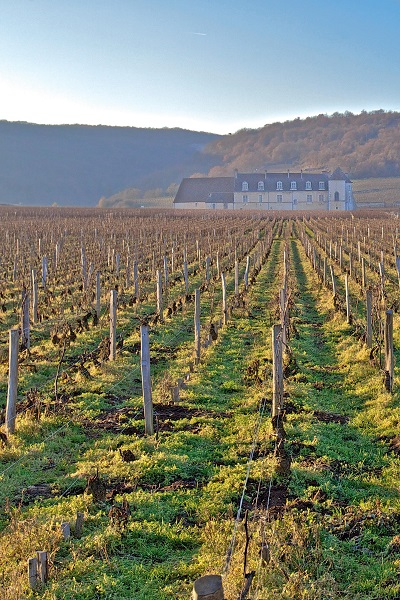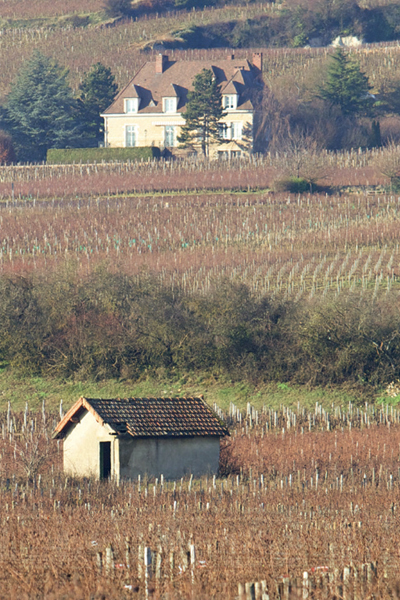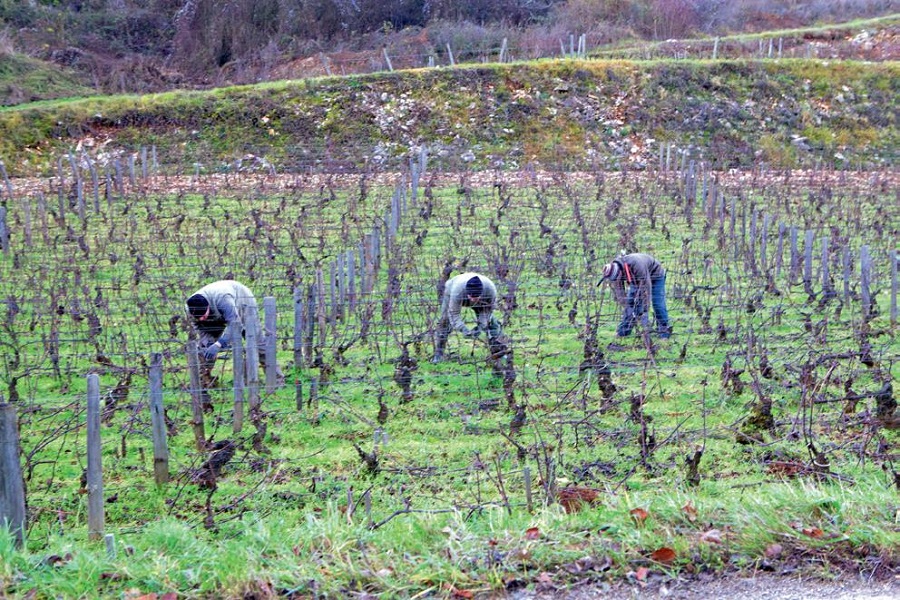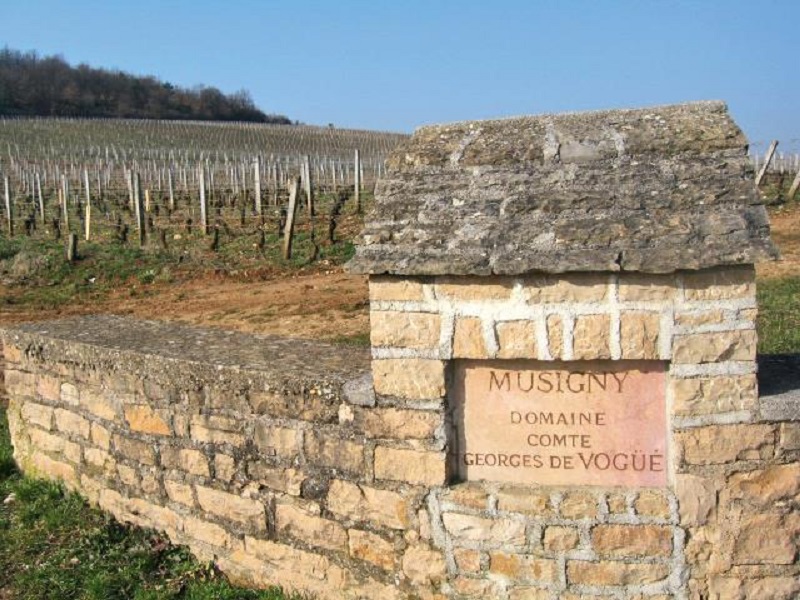The trouble with Burgundy: why selecting a good one is like walking through a minefield | ABS-CBN

Welcome, Kapamilya! We use cookies to improve your browsing experience. Continuing to use this site means you agree to our use of cookies. Tell me more!
The trouble with Burgundy: why selecting a good one is like walking through a minefield
The trouble with Burgundy: why selecting a good one is like walking through a minefield
Jojo Madrid
Published Mar 06, 2019 10:50 PM PHT
|
Updated Mar 06, 2019 11:37 PM PHT
It all began with a glass of mature Burgundy at a lunch in La Tour d'Argent in Paris in May 2007. I was dining with my Connecticut-based wine merchant friend Ben Wallace, who thumbed through the restaurant's four-inch thick "wine bible" as quickly as going through the yellow pages.
It all began with a glass of mature Burgundy at a lunch in La Tour d'Argent in Paris in May 2007. I was dining with my Connecticut-based wine merchant friend Ben Wallace, who thumbed through the restaurant's four-inch thick "wine bible" as quickly as going through the yellow pages.
I asked Ben to choose the wines that day since he was, after all, in the wine business. He selected a Rosseau Clos de Beze 1982. David Ridgeway, the head sommelier and a well-known authority on wines in Paris, suggested that Ben choose something else because 1982 was an off-vintage in Burgundy, but my friend seemed confident about his choice.
I asked Ben to choose the wines that day since he was, after all, in the wine business. He selected a Rosseau Clos de Beze 1982. David Ridgeway, the head sommelier and a well-known authority on wines in Paris, suggested that Ben choose something else because 1982 was an off-vintage in Burgundy, but my friend seemed confident about his choice.
For 23 years, the bottle of Rousseau was aging at La Tour d'Argent's cellar beneath the Seine River at a temperature of 14°C. Like all old bottles stored in cool and humid conditions, the label was moldy and the vintage was barely recognizable.
For 23 years, the bottle of Rousseau was aging at La Tour d'Argent's cellar beneath the Seine River at a temperature of 14°C. Like all old bottles stored in cool and humid conditions, the label was moldy and the vintage was barely recognizable.
The bottle was served after breathing for an hour. I lifted the glass and looked at its hue, examining the nose. I saw rust and smelled Asian spices, forest floor, earth, and horse saddle leather. I took a sip and what flowed through my palate was beyond description. It was absolutely ethereal, sublime, and incredibly long and complex. This bottle of pristinely-stored Clos de Beze 1982 was what got me started on my passion for Burgundy.
The bottle was served after breathing for an hour. I lifted the glass and looked at its hue, examining the nose. I saw rust and smelled Asian spices, forest floor, earth, and horse saddle leather. I took a sip and what flowed through my palate was beyond description. It was absolutely ethereal, sublime, and incredibly long and complex. This bottle of pristinely-stored Clos de Beze 1982 was what got me started on my passion for Burgundy.
ADVERTISEMENT
A region that's hard to grasp
A region that's hard to grasp
Burgundy happens to be one of the most difficult wine regions in the world to grasp. The only thing simple about Burgundy is that most whites are from the Chardonnay grape and all reds, with the exception of Beaujolais, are made of pinot noir. Its simplicity ends there.
Burgundy happens to be one of the most difficult wine regions in the world to grasp. The only thing simple about Burgundy is that most whites are from the Chardonnay grape and all reds, with the exception of Beaujolais, are made of pinot noir. Its simplicity ends there.
Consider that in the Cote d'Or, one of five regions in Burgundy, there are 25 villages. Surrounding them are hundreds of vineyards, most of which are under a hectare in size. Each vineyard may have multiple producers owning as little as one to two rows of vines. The vineyard, Clos Vougeot, has 80 individual owners.
Consider that in the Cote d'Or, one of five regions in Burgundy, there are 25 villages. Surrounding them are hundreds of vineyards, most of which are under a hectare in size. Each vineyard may have multiple producers owning as little as one to two rows of vines. The vineyard, Clos Vougeot, has 80 individual owners.
The fragmentation of Burgundy's production system is in stark contrast to Bordeaux's more coherent structure where every vineyard has one owner under one Chateau. Burgundy's fragmented ownership is due to France's capital tax, which forced landowners to sell off parts of their vineyards to pay for their liabilities as their land values rose. Inheritance taxes also required equal division of assets among siblings.
The fragmentation of Burgundy's production system is in stark contrast to Bordeaux's more coherent structure where every vineyard has one owner under one Chateau. Burgundy's fragmented ownership is due to France's capital tax, which forced landowners to sell off parts of their vineyards to pay for their liabilities as their land values rose. Inheritance taxes also required equal division of assets among siblings.
In 1936, Burgundy instituted a classification system called appellation controlie, which ranked all the vineyards. In ascending order, it identified "regional" wines, "village" wines, "Premier Cru," and "Grand Cru." The classification is based on terroir, unlike Bordeaux's which is based on price. Terroir is the physical environment that takes into account the soil, the slope, drainage, and sun exposure. In terms of production, the less expensive "regional" wines account for about 70 percent of Burgundy's production, and "Grand Crus" as little as one percent. Prices escalate sharply as one goes up the quality scale.
In 1936, Burgundy instituted a classification system called appellation controlie, which ranked all the vineyards. In ascending order, it identified "regional" wines, "village" wines, "Premier Cru," and "Grand Cru." The classification is based on terroir, unlike Bordeaux's which is based on price. Terroir is the physical environment that takes into account the soil, the slope, drainage, and sun exposure. In terms of production, the less expensive "regional" wines account for about 70 percent of Burgundy's production, and "Grand Crus" as little as one percent. Prices escalate sharply as one goes up the quality scale.
However, the classification system did not guarantee quality. The most frustrating thing about Burgundy is the region's lack of consistency. Selecting a Burgundy is like walking through a minefield. Consumers get frustrated and give up, preferring more consistent regions like Bordeaux. This is, indeed, unfortunate because those who've thrown in the towel are letting the most distinctive and terroir-driven wines in the world pass them by. For me, the pursuit of the region's best is where the challenge and enjoyment lie.
However, the classification system did not guarantee quality. The most frustrating thing about Burgundy is the region's lack of consistency. Selecting a Burgundy is like walking through a minefield. Consumers get frustrated and give up, preferring more consistent regions like Bordeaux. This is, indeed, unfortunate because those who've thrown in the towel are letting the most distinctive and terroir-driven wines in the world pass them by. For me, the pursuit of the region's best is where the challenge and enjoyment lie.
Emphasis on the producer
Emphasis on the producer
The wines from the different villages each possess unique aromas, flavors, characteristics. The reds from Gevrey-Chambertin are known to be muscular and concentrated, while the ones from Chambolle-Musigny are charming and seductive. Vosne-Romanee reds are known for their elegance and discreet tannins, and have perfumes of cherry and undergrowth, while the reds of Nuits-Saint-Georges are among the most tannic, full-bodied, and complex. Pommard reds in Beaune, on the other hand, are spicy, earthy, and minerally, and take on a gamey, rustic character as they age, while Volnays epitomize elegance and femininity. Meursault whites are typically rich and minerally, while those from neighboring Puligny-Montrachet are riper, more concentrated, and dense.
The wines from the different villages each possess unique aromas, flavors, characteristics. The reds from Gevrey-Chambertin are known to be muscular and concentrated, while the ones from Chambolle-Musigny are charming and seductive. Vosne-Romanee reds are known for their elegance and discreet tannins, and have perfumes of cherry and undergrowth, while the reds of Nuits-Saint-Georges are among the most tannic, full-bodied, and complex. Pommard reds in Beaune, on the other hand, are spicy, earthy, and minerally, and take on a gamey, rustic character as they age, while Volnays epitomize elegance and femininity. Meursault whites are typically rich and minerally, while those from neighboring Puligny-Montrachet are riper, more concentrated, and dense.
If you want to buy Burgundy, being familiar with the villages and vineyards helps. However, the single most important aspect of the region is the producer. Every producer has an individual approach to the vineyard, vinification techniques, or philosophy in making wine. I tend to go for a producer who sees himself as an intermediary between the soil or vines and the wine. These producers allow the wines to reflect the true character of the vines, respecting terroir in the belief that less means more. I think drinkers who lean toward the over-extracted, over-oaked style of wines are missing the whole point of Burgundy.
If you want to buy Burgundy, being familiar with the villages and vineyards helps. However, the single most important aspect of the region is the producer. Every producer has an individual approach to the vineyard, vinification techniques, or philosophy in making wine. I tend to go for a producer who sees himself as an intermediary between the soil or vines and the wine. These producers allow the wines to reflect the true character of the vines, respecting terroir in the belief that less means more. I think drinkers who lean toward the over-extracted, over-oaked style of wines are missing the whole point of Burgundy.
Over the years, I've followed several producers who have shown excellent consistency during the best of vintages and the worst. These are growers who respect tradition and yet are open to new ideas and principles if they improve quality. Often, these producers restrict yields, use natural yeasts, employ more gentle pressings, allow longer aging on lees, and minimize the use of new oak.
Over the years, I've followed several producers who have shown excellent consistency during the best of vintages and the worst. These are growers who respect tradition and yet are open to new ideas and principles if they improve quality. Often, these producers restrict yields, use natural yeasts, employ more gentle pressings, allow longer aging on lees, and minimize the use of new oak.
My favorite white wine producers are Lafon and Roulot in Meursault; Leflaive and Pernot in Puligny-Montrachet; and Ramonet and Moreau in Chassagne-Montrachet. For reds, Rousseau and Bachelet in Gevrey-Chambertin; Comte de Vogue, Roumier, and Barthod in Chambolle; Clos de Tart and Clos de Lambrays in Morey-Saint-Denis; Mugneret-Gibourg and Anne Gros in Vosne-Romanee; Hudelot-Noellat in Vougeot; and Chevillon and Gouges in Nuits-Saint-Georges.
My favorite white wine producers are Lafon and Roulot in Meursault; Leflaive and Pernot in Puligny-Montrachet; and Ramonet and Moreau in Chassagne-Montrachet. For reds, Rousseau and Bachelet in Gevrey-Chambertin; Comte de Vogue, Roumier, and Barthod in Chambolle; Clos de Tart and Clos de Lambrays in Morey-Saint-Denis; Mugneret-Gibourg and Anne Gros in Vosne-Romanee; Hudelot-Noellat in Vougeot; and Chevillon and Gouges in Nuits-Saint-Georges.
Burgundies are produced in far less quantities than Bordeaux. As such, accessibility to good Burgundies can be difficult. In spite of the restricted production, Burgundies are sold at prices that are at par with just-released Bordeaux (demand from China caused the recent upsurge in Bordeaux prices). However, as supply becomes scarcer when bottles approach maturity at 15 to 20 years, the prices of fine Burgundy spike at a much faster rate. Still, the best bottles of Burgundy are rarely found in the market because most are kept in the cellars of wine collectors. They surface at auctions, but by then their prices have become prohibitive, giving consumers more reason to turn to Bordeaux.
Burgundies are produced in far less quantities than Bordeaux. As such, accessibility to good Burgundies can be difficult. In spite of the restricted production, Burgundies are sold at prices that are at par with just-released Bordeaux (demand from China caused the recent upsurge in Bordeaux prices). However, as supply becomes scarcer when bottles approach maturity at 15 to 20 years, the prices of fine Burgundy spike at a much faster rate. Still, the best bottles of Burgundy are rarely found in the market because most are kept in the cellars of wine collectors. They surface at auctions, but by then their prices have become prohibitive, giving consumers more reason to turn to Bordeaux.
I would advice collectors to purchase or stock up on their favorite producers early on. Like Bordeaux, top Burgundies need at least 10 to 20 years of cellaring before they come to their own. However, unlike Bordeaux, the best of Burgundies quickly disappear shortly after their release—making them less accessible.
I would advice collectors to purchase or stock up on their favorite producers early on. Like Bordeaux, top Burgundies need at least 10 to 20 years of cellaring before they come to their own. However, unlike Bordeaux, the best of Burgundies quickly disappear shortly after their release—making them less accessible.
Wine tasting in Burgundy
Wine tasting in Burgundy
There's simply no substitute to learning about Burgundy than being there. Igo Madrid advises what to do before you even think about booking that ticket
There's simply no substitute to learning about Burgundy than being there. Igo Madrid advises what to do before you even think about booking that ticket
WHEN TO GO: Spring and early summer are generally good times to visit. The time of the year to avoid is August when the French take their month-long annual vacation and September-October during the preparation of the harvest and the harvest itself.
WHEN TO GO: Spring and early summer are generally good times to visit. The time of the year to avoid is August when the French take their month-long annual vacation and September-October during the preparation of the harvest and the harvest itself.
HOW TO BOOK AN APPOINTMENT: A visit to Cote d'Or, the heart of Burgundy, requires preparation—especially if you plan to visit growers. It is suggested that you do this four to six weeks in advance because growers have a very demanding schedule. It is most likely that the grower or producer himself will reply, and meet with you in person when you arrive. It is also not entirely unusual that you may not get a reply or that your appointment request is not entertained especially if the producer is famous. Another option is to ask the assistance of a wine broker who has extensive contacts in Burgundy, although access to them can be difficult if you have not conducted business with them. If you are lucky enough to get an appointment, don't be late.
HOW TO BOOK AN APPOINTMENT: A visit to Cote d'Or, the heart of Burgundy, requires preparation—especially if you plan to visit growers. It is suggested that you do this four to six weeks in advance because growers have a very demanding schedule. It is most likely that the grower or producer himself will reply, and meet with you in person when you arrive. It is also not entirely unusual that you may not get a reply or that your appointment request is not entertained especially if the producer is famous. Another option is to ask the assistance of a wine broker who has extensive contacts in Burgundy, although access to them can be difficult if you have not conducted business with them. If you are lucky enough to get an appointment, don't be late.
PREPARATION: Do some research on the grower prior to your visit. It helps if you have some knowledge of their vineyards and vinification techniques, and even better if you've tasted their wines.
PREPARATION: Do some research on the grower prior to your visit. It helps if you have some knowledge of their vineyards and vinification techniques, and even better if you've tasted their wines.
Photographs by Terry JS
This story first appeared in Vault Magazine Issue 3 2011.
Read More:
ancx
anc
ancx.ph
anc-x
abs-cbn
food and drink
features
Burgundy
La Tour d'Argent's
Chardonnay grape
ADVERTISEMENT
ADVERTISEMENT







